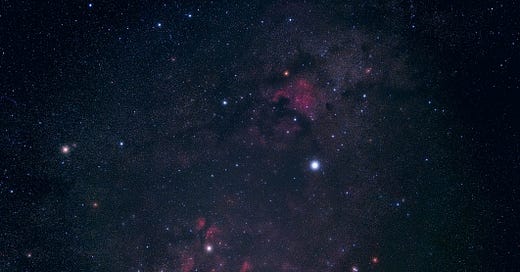In 2023, radio astronomers discovered that satellites from SpaceX's Starlink constellation were emitting signals far outside the frequency bands that the internet service is authorized to use. The electromagnetic leakage from Starlink's first-generation satellites, while apparently unintentional, effectively obscured sensitive radio telescopes that astronomers use to observe faraway and faint sources. When SpaceX was made aware of the disturbance, the company managed to reduce leakage.
But the problem returned in full force last year, with emissions this time coming from the second-generation Starlink V2-mini satellites. While the exact cause of the leakage is unclear, Benjamin Winkel of the Max Planck Institute for Radio Astronomy (MPIfR) said it may stem from the satellites' propulsion system or an internal signal generator. Whatever the cause, the leakage is thousands of times stronger than the radio signals coming from the parts of space that radio telescopes are used to study, limiting the ability of astronomers to continue their work.
"The thing with satellites is that you cannot easily fix them once they are in orbit," said Winkel, who co-authored the study that detected the radio astronomy disturbances caused by Starlink. "How do you modify them? Either you have some possibilities to modify the software on board the satellite." Or, the other option: wait the roughly five years that it takes for Starlink satellites to fall out of orbit.
SpaceX did not respond to a request for comment.
The unresolved Starlink leakage saga illustrates the disastrous impact that commercial satellites can have on science. For astronomers, the problem is only getting worse. There are nearly 7,900 Starlink satellites currently in orbit and SpaceX has said that it plans to launch up to 42,000. While SpaceX is collaborating with astronomers to reduce interference, these measures have proven insufficient.
And in the near future, it won't just be SpaceX operating thousands of commercial satellites. Other celestial internet firms hoping to compete with Starlink, including Amazon's Kuiper, EutelSat OneWeb, and Chinese state-backed firms Qianfan and Guo Wang, plan to launch tens of thousands of satellites by the end of the decade. Astronomers may not know how those satellites will affect their work until it's too late.
Radio astronomy involves the use of a system of antennas, receivers, and reflectors to collect distant radio waves. Although undetectable to the human eye, these waves provide crucial insights into the history of the universe and the celestial objects that populate it. Radio telescopes are typically built in extremely remote regions of the world, such as Western Australia or Northern Cape, South Africa, to ensure researchers avoid most emissions from cell phones, TV or radio broadcasts, and other electronics. But manmade emissions from outer space are now following astronomers everywhere.
"We can still operate because we go to faraway places. But with the satellites, that model breaks down completely because we cannot escape them," said Winkel, who warned that commercial satellite constellations like Starlink could pose an existential threat to the field of radio astronomy.
"It's a really tough time for astronomy," he added. "Some people will propose, 'Now that we have access to space, why don't you do radio astronomy there?' That's science fiction. It's not possible. Our telescopes are 100-meter-wide dishes. You cannot build them in space. Maybe in 100 years, but not today. "
Despite the importance of this work and the billions of dollars spent developing radio telescope facilities, there is little that can be done to protect the discipline as outer space becomes increasingly crowded with man-made objects.
In dealing with the emissions from Starlink, astronomers lack clear legal recourse. The International Telecommunication Union, a U.N. agency, governs intentional emission violations, not inadvertent ones. That means astronomers can only wait and hope that private companies will choose to clean up the emissions that leak from their satellites.
"New licensing requirements [for commercial satellites] are needed," said Rotola Giuliana, a space law expert who co-leads the policy arm of the International Astronomical Union's Centre for the Protection of the Dark and Quiet Sky (IAU CPS). "We are already late on that because we have about 10,000 satellites active in orbit now, and the problems that are created by those satellites are already there. So we need to move fast because the industry is moving faster."
The IAU CPS coordinates dialogue between astronomers and satellite operators and advocates for space policy issues to be brought before the U.N. However, when the U.N. has developed international treaties or resolutions on space, they are often nonbinding or lack buy-in from the major spacefaring nations. Even achieving those minuscule steps can take years.
Some progress has been made at the national level, including in France, which in 2018 adopted a decree for the protection of astronomy. But there is little incentive for countries to adopt rules that could curtail their space industries. "I don't know that the U.S. would impose a very strict legislation," said Giuliana. "I don't think it would be convenient for them, and it also wouldn't be convenient for Elon Musk, who could just move Starlink operations to another country."





IMHO the concept of Starlink is not a bad idea, but it should be nationalized for security reasons: one person should not have this kind of control over foreign policy (although with Trump in the White House it's kinda going from the frying pan to the fire). Also, if Starlink were a single system non-profit, we could have affordable internet for all AND we wouldn't have competing systems so there would be fewer satellites and less environmental impact.
What's so sad is I am not surprised